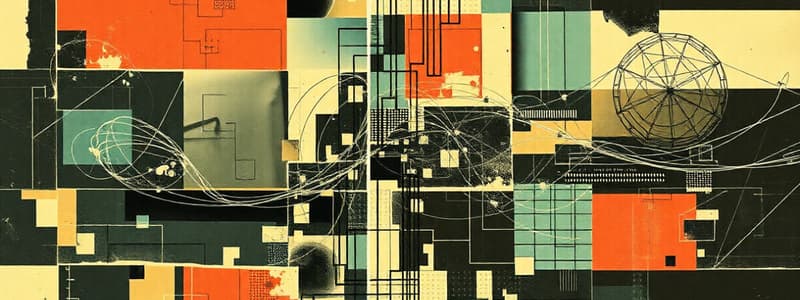Podcast
Questions and Answers
What is a network?
What is a network?
A network is a set of devices (nodes) connected together by communication links for data transmission and sharing resources.
Which of the following is NOT a type of data handled by a network?
Which of the following is NOT a type of data handled by a network?
- Electricity (correct)
- Video
- Voice
- Text
A Data Communication System has five main components: Data message, Sender, Receiver, Medium, and ____.
A Data Communication System has five main components: Data message, Sender, Receiver, Medium, and ____.
Protocol
The Internet consists of a single network connecting all devices.
The Internet consists of a single network connecting all devices.
What is the primary purpose of a computer network?
What is the primary purpose of a computer network?
What are the components of the postal system hierarchy mentioned?
What are the components of the postal system hierarchy mentioned?
Flashcards are hidden until you start studying
Study Notes
Course Information
- CEN604: Computer Networks, taught by Dr. Ibrahim Alsukayti
- Credit Hours: 3
- Course Schedule: Mondays (12:30 - 2:10 pm) and (2:30 - 4:10 pm)
- Grading:
- Mid-term 1: 20%
- Homework and Quizzes: 10%
- Project: 20%
- Final Exam: 50%
Textbook
- Recommended Textbook:
- "Computer Networking: A Top Down Approach", by Jim Kurose and Keith Ross, published by Addison-Wesley.
- Other suggested books:
- "Computer Networks: A Systems Approach" by Peterson and Davie
- "Data Communication and Networking" by Behrous A. Forouzan
Course Outline
- Chapter 1: Computer Networks and The Internet
- Chapter 2: Application Layer
- Chapter 3: Transport Layer
- Chapter 4: Network Layer
- Chapter 5: Link Layer
- Chapter 6: Wireless and Mobile Networks
- Chapter 7: Multimedia Networking
- Chapter 8: Security in Computer Networks
- Chapter 9: Network Management
Introduction to Computer Networks
- A network is a collection of devices (nodes) linked by communication channels for data sharing and resource transferring.
- Network types:
- Telephone networks: Designed for voice transmission, connecting specialized devices.
- Cable TV networks: Manage video data, connecting specialized devices.
- Computer networks: Handle various data types (text, voice, video), connecting general-purpose programmable devices for diverse applications.
Data Communication System
- A data communication system has five essential components:
- Data message: The information to be transmitted.
- Sender: The device that initiates the transmission.
- Receiver: The device that receives the transmission.
- Medium: The physical pathway through which the data travels.
- Protocol: The set of rules that govern the communication process.
Network Structures
- Point-to-point: Two devices are connected directly.
- Multiple-access: Multiple devices share a common communication link (e.g. a hub).
- Switched Network: A network built with switches, enabling data to be routed specifically to different destinations.
- Interconnection of networks: Multiple networks connected together, (e.g. the internet).
Key Concepts
- Network edge: Refers to the users and their connection points to the network (hosts, access networks, physical media).
- Network core: The central infrastructure of the network, handling data routing and network switching.
- Packet switching: A method to transfer data by dividing it into small packets and sending them through the network.
- Circuit switching: A dedicated connection remains open between devices for the duration of communication.
- Performance metrics:
- Loss: Data loss in the network.
- Delay: Time for a message to travel between points.
- Throughput: Rate at which data is successfully transmitted.
Layers and Services
- Protocol layers: Divide network protocols into layers, enabling communication between different systems.
- Service models: Describe the communication services offered by each layer.
Network History
- The course will cover the evolution and historical development of networking.
Studying That Suits You
Use AI to generate personalized quizzes and flashcards to suit your learning preferences.




